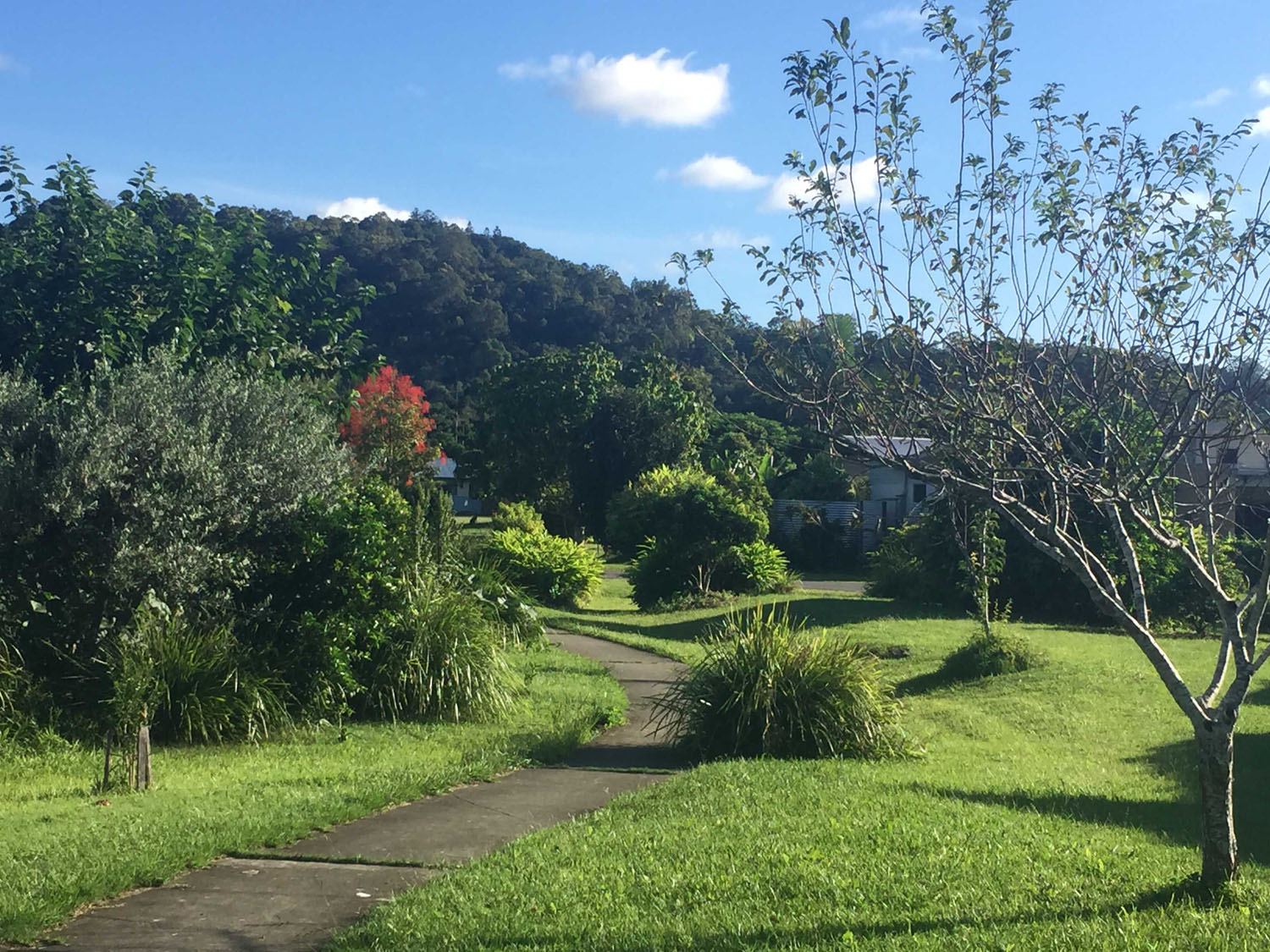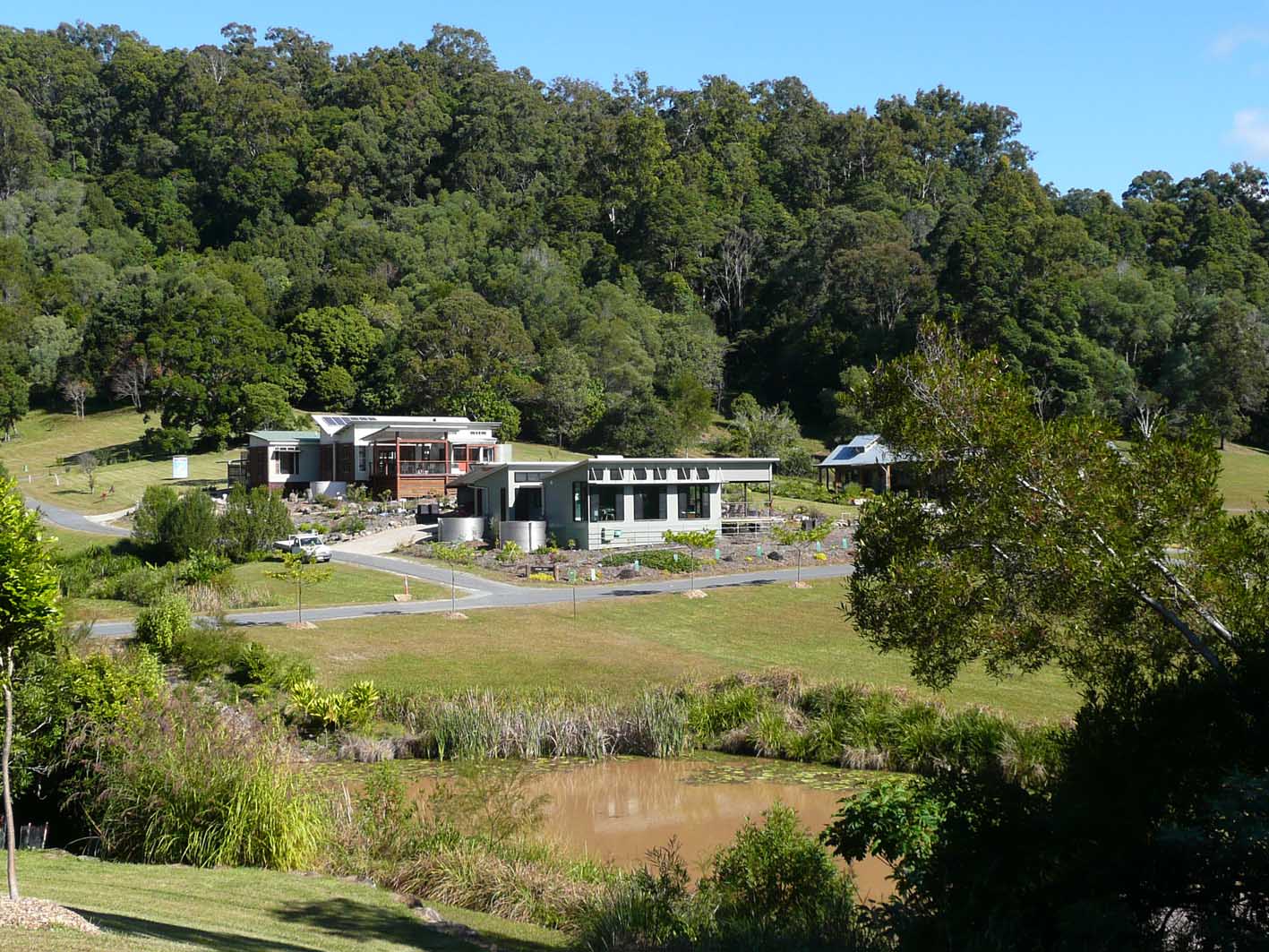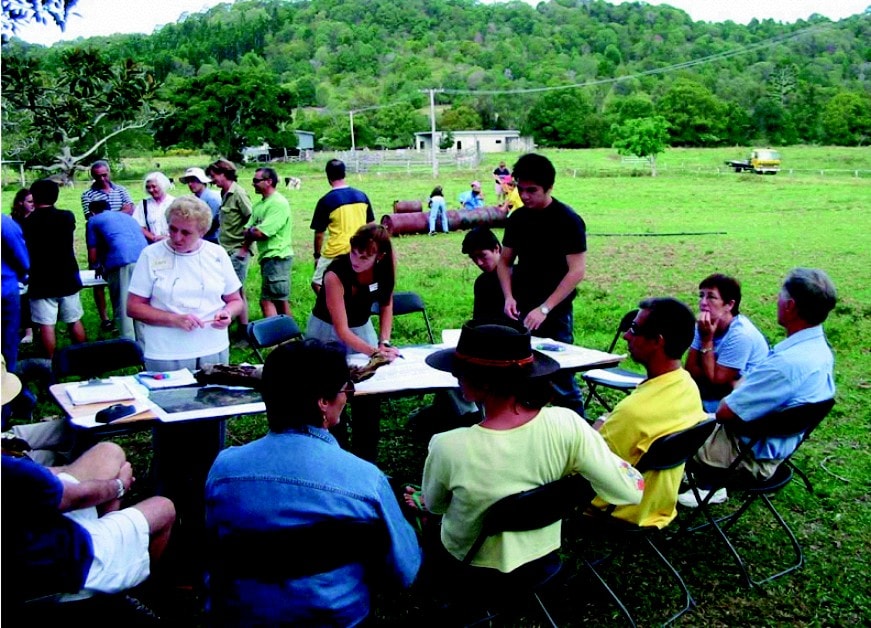South-East Queensland is rapidly morphing into a continuous fabric of suburban development. Interstate migration and the call of the sun are sustaining housing booms on the edges of Gold Coast City.
Landmatters Pty Ltd in collaboration with John Mongard Landscape Architects set out to `build a project that inspires and sets a world’s best standard for the future community of Australia’. The proposal was to develop an alternative approach to sprawl by using ecologically sustainable principles. With this came the challenge to prove to the local community that suburban sprawl was not just about to begin on their sensitive doorstep.
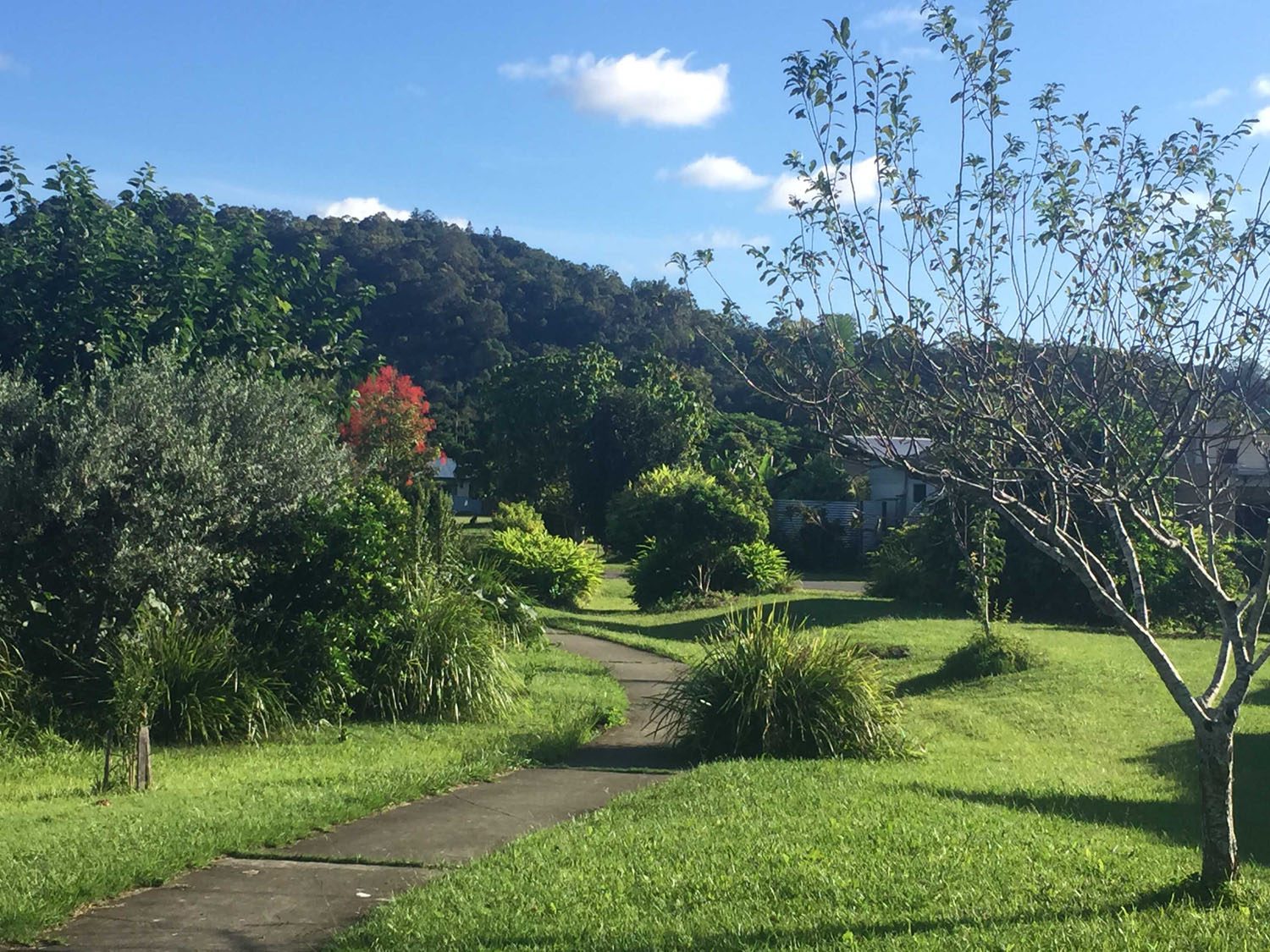
Walkable greenways link small clusters of eco-friendly houses 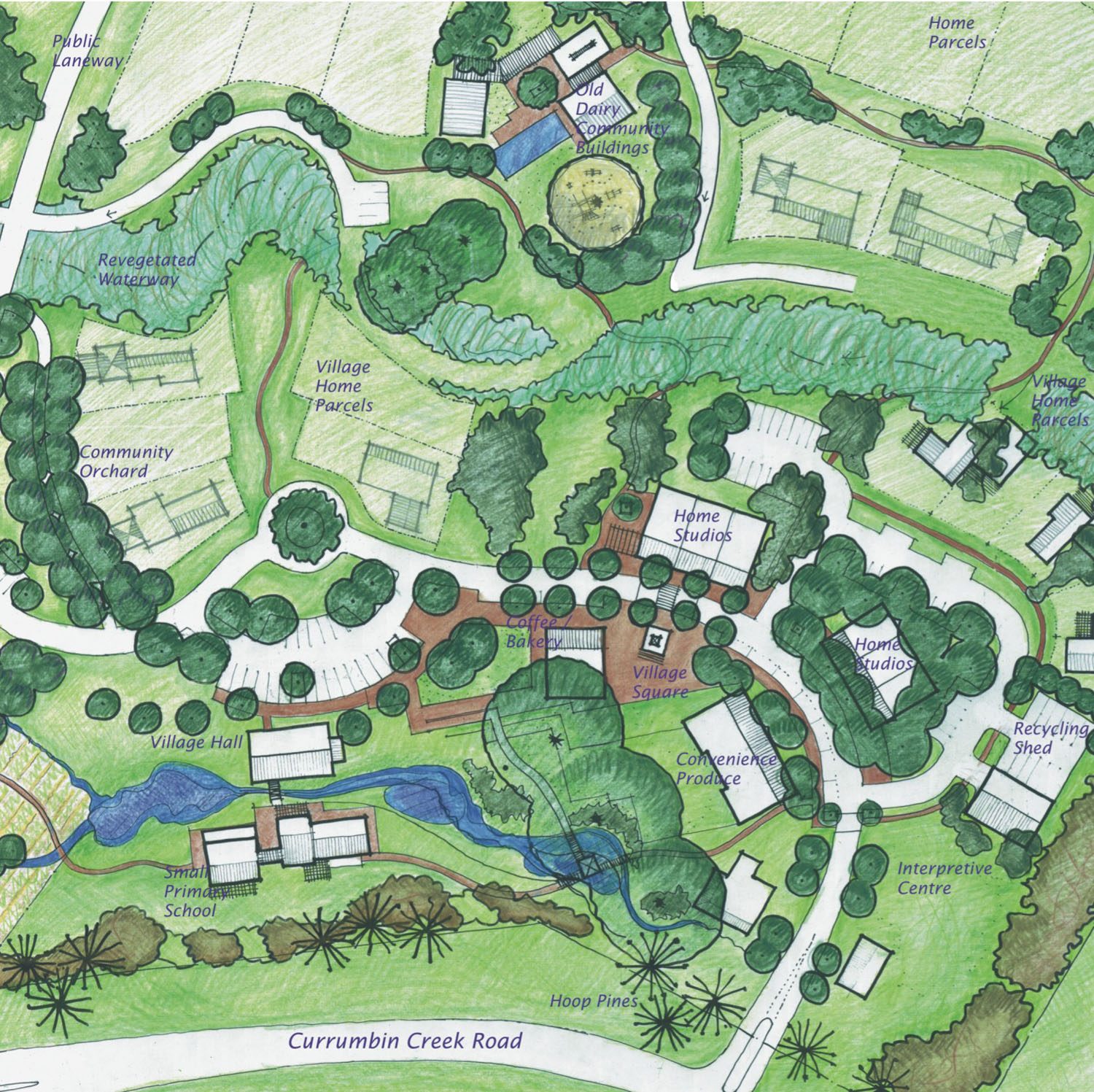
Masterplan: The Village Centre 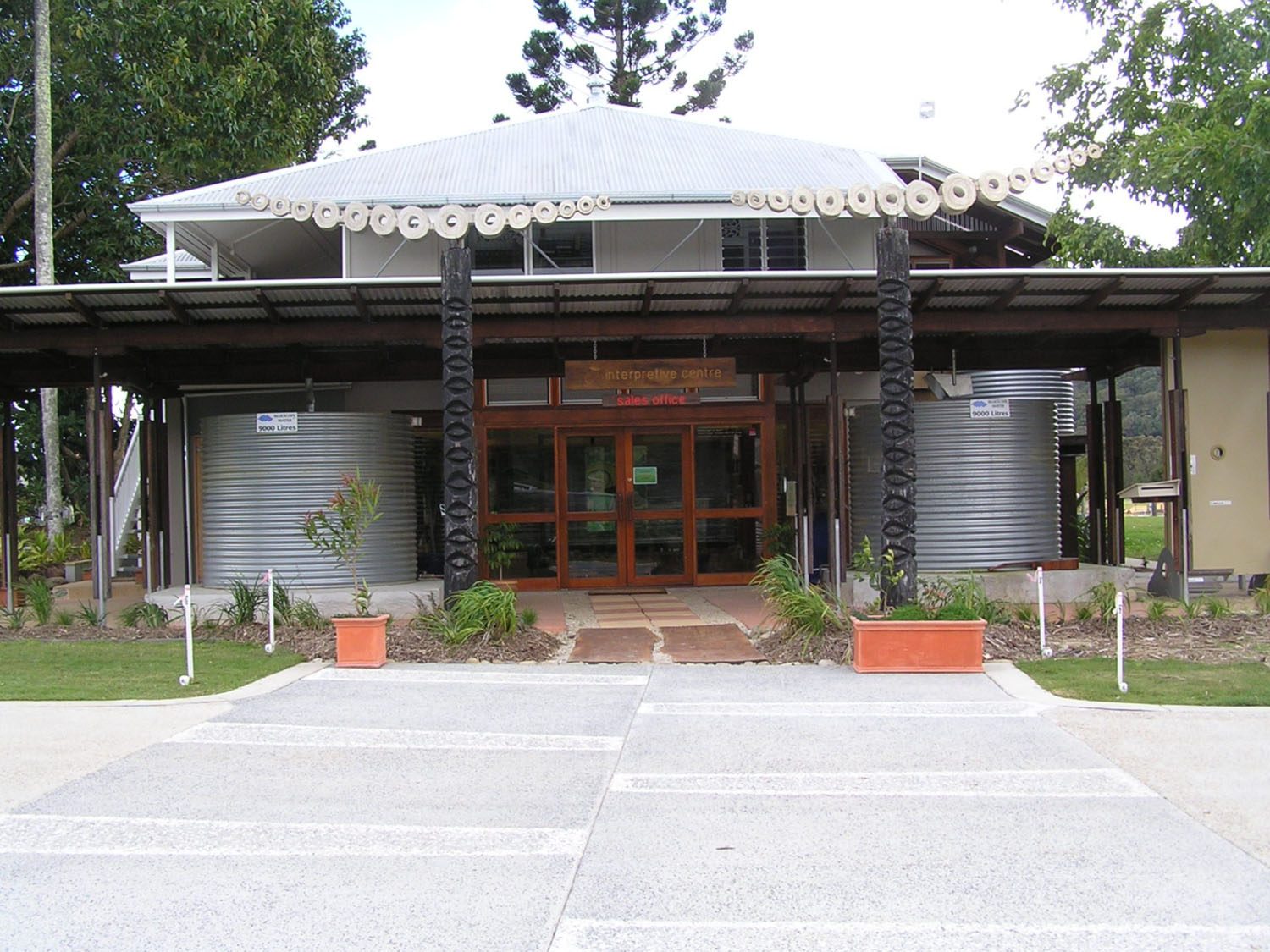
Interperative centre recycled from the old farm house
The EcoVillage at Currumbin is by far the greenest housing project the city has seen, and has been promoted as the most sustainable project in Queensland by the Environmental Protection Agency of Queensland and by the Urban Development Institute of Australia. It has won over 30 national and international awards for all aspects of design and planning, including the award of the most sustainable small suburb in the world. The brief was strongly influenced by the community design process, with the visions, concerns and ideas of the valley’s residents actively harnessed through a weeklong onsite brainstorming. Over four hundred people attended these brainstorms which were run from the old dairy shed on the property.

The undeveloped site, a former cattle property 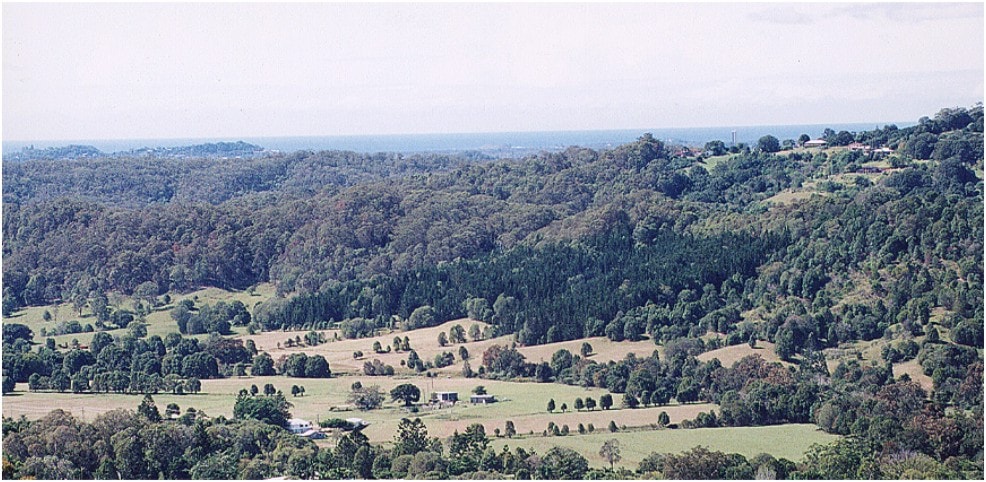
View of the undeveloped site 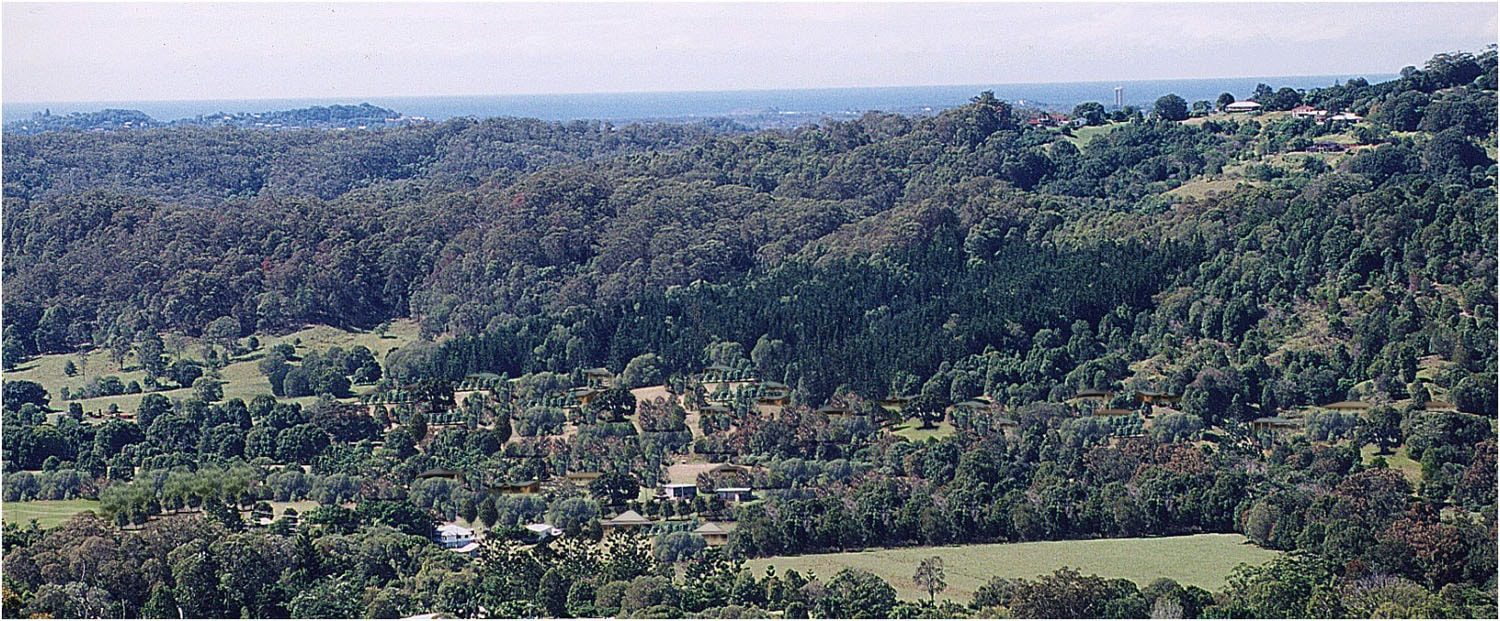
Perspective of the EcoVillage after revegetation
Climate and entery adaptive urban form
The EcoVillage at Currumbinhas developed strategies and design codes which will lead to a change in approach and will give more than just lip-service to environmental sustainability. The layout of the ecovillage follows landform and landcover, creating eco-hamlet footprints which were all created on cleared land with no environmental constraints.
Currently, over 50% of our energy usage in the suburbs in South-East Queensland goes to heating water. The wastage of water as a vital resource also is a characteristic of the suburbs. The EcoVillage at Currumbin tackles all aspects of energy use and conservation, from the use of local materials and technology, to the `closed-loop’ paradigm for keeping all materials and wastes on-site and recycled. The development is the only large peri-urban project in Queensland to currently be offering self-contained water and wastewater recycling systems, and mandating energy standards.
The outcome of sprawl is usually an immediate change in landscape character. The EcoVillage at Currumbin has sited each home parcel with the goal of achieving minimal visual impact on the neighbourhood. The infrastructure has been re-invented and moved from conventional pipes and roads to soft and environmental infrastructure.
Breaking the division of living places and food production places is one of the urgent agendas of creating a sustainable future. At the ecovillage, food-productive landscapes are integrated, from community orchards through to both private and communal vegetable patches. A food-co op and market sells produce in the village centre.
The ecovillage in its physical and social intention, as well as in its titling and developmental process, created a new benchmark for self sustainable growth in the hinterlands of the city.


